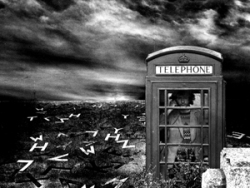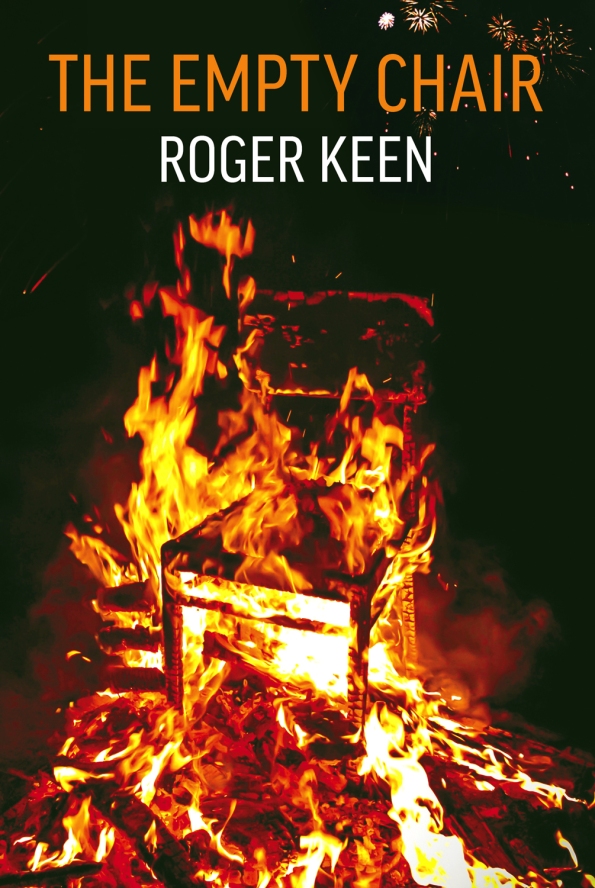3-D—A Vicariously Trippy Experience
 The news that Alice in Wonderland has become the tenth highest grossing movie of all time, supplanting Peter Jackson’s The Two Towers, further strengthens the hold the 3-D phenomenon has taken over cinema. The fact that an offbeat fantasy, which did not receive the highest critical praise, could be so successful is another indication that audiences are flocking to cinemas for the spectacle, the buzz of 3-D alone, with subject matter a secondary concern. So what exactly is the nature of the new 3-D’s seductive allure, its x-factor, its secret ingredient? As psychedelic initiates have realised, 3-D produces something like an altered state, a non-ordinary level of sensory experience that is comparable to a drug trip.
The news that Alice in Wonderland has become the tenth highest grossing movie of all time, supplanting Peter Jackson’s The Two Towers, further strengthens the hold the 3-D phenomenon has taken over cinema. The fact that an offbeat fantasy, which did not receive the highest critical praise, could be so successful is another indication that audiences are flocking to cinemas for the spectacle, the buzz of 3-D alone, with subject matter a secondary concern. So what exactly is the nature of the new 3-D’s seductive allure, its x-factor, its secret ingredient? As psychedelic initiates have realised, 3-D produces something like an altered state, a non-ordinary level of sensory experience that is comparable to a drug trip.
The very act of putting on the glasses and seeing things differently is like passing through a gateway, or cleansing doors of perception. Then there’s the strangeness, the strikingly unusual quality of 3-D vision, where everything is heightened, surfaces and textures are more alive and resonant, and the commonplace becomes transfigured and imbued with specialness. The nature of how things are rendered in 3-D becomes part of the viewing pleasure, as important a factor as plot, action and characterisation; and the anticipation of the next 3-D thrill, plus the sense of immersement in another realm, take the audience beyond mere cinema into theme-park-ride and virtual-reality territory—other parallels for chemically enhanced consciousness.
Moreover, Alice in Wonderland proves the case that 3-D movies are becoming trippier in terms of narrative and design as well as in sensory effect. The story of Alice has been a favourite paradigm for trippiness ever since Grace Slick’s ‘White Rabbit’ marshalled up the references: substances to make you grow or shrink, a hookah-smoking Caterpillar and the talking Rabbit himself—a film favourite from Harvey to Donnie Darko to Inland Empire. Using a medley of techniques—green screen, motion capture, live action and full animation—Tim Burton has pieced together a new Wonderland for the 2010s, and with a combination of his already well-developed Gothic-weird sensibilities and the astute use of 3-D, he has rendered the material into a totally bone fide trippy adventure. In 3-D the z-axis layering of the various elements—themselves set at different points in the scale of reality to unreality—creates a synergy that gives rise to an entirely new whole: an alloy of the real and imaginary that lives independently on its own terms…how psychedelic is that?
Burton’s Wonderland, with its dreamy, florid feel, vivid colours and scores of other pointers—from the Red Queen’s expanded head to the Mad Hatter’s intoxicated smile and spaced-out eyes—speaks to the pharmo-initiated in their own language. But then the majority of moviegoers, people who’ve never read the source material, never listened to Jefferson Airplane and certainly never taken acid, still respond to those triggers, sharing in a vicariously trippy experience—a new perspective, a convulsively heightened sensory buzz.
As writers such as Erik Davis have noted, Avatar, the technological benchmark and the definitive 3-D movie, also contains striking psychedelic elements, the whole story functioning as a metaphor for consciousness expansion. Unable to walk, paraplegic Jake Sully becomes ‘reborn’ in his avatar body and has to learn how to function within it from first principles, getting carried away by his over-exuberance. Then he enters an alien world, filled with unfamiliar delights and dangers, gradually transforming his identity as he faces up to difficult challenges and finds his feet within his new peer group, the shamanically orientated Na’vi community. Jake becomes rebased, discovers the true secrets of life and then uses that knowledge subversively in order to thwart the unenlightened, imperialistic designs of his fellow Earthfolk and save Pandora—the psychedelic underground’s whole quest in a nutshell. Also, the accompanying iconography, with its vivid cartoonified colour scheme and taste for dreamlike spectacle and phantasmagoria, evokes the psychedelic art of posters and album covers of the golden age of the ’60s and ’70s, most particularly the work of Roger Dean; and sequences such as the journey to the floating islands and the dynamic scenes of aerial manoeuvring and combat are like such art sprung pyrotechnically into 3-D tripped-out life.
One could say that the propensity for 3-D to mimic the drug trip has led filmmakers inexorably down the path of acquiring other psychedelic trappings in order to consolidate the total effect. And indeed this is nothing new within the genres of science fiction and fantasy, which have continually relied on otherness in its myriad forms as a staple entity. 2001: A Space Odyssey, regarded by many as the greatest sci-fi film of all time, combines an overall theme of evolutionary expansion with one of the finest expositions of visual psychedelia ever: the Star Gate sequence, with its endlessly protracted journey along a tunnel of splintering colour and light, incorporating surreal space/time shifts and a surfeit of posterised, kaleidoscopic, fractal, amoeboid imagery, intercut with the face and eye of the overwhelmed protagonist. Considering it was made in 1968, the special effects stand up brilliantly against today’s CGI equivalents; but imagine something like Star Gate in 3-D? Now we’re talking.
Then there are movies such as The Matrix, with its definitive fusion of cyberpunk and a psychedelic alternative reality, which functions on its own arcane terms, coupled with a messiah figure, destined to save humanity, and the beautiful choice he is offered…between pills of red and blue. There are strong parallels between The Matrix and Avatar, as both involve having the physical body in a supine state while the real action takes place in another realm or virtual world, to which the subject is tenuously linked. All this corresponds to shamanic astral projection, out-of-the-body experiences, lucid dreaming and states induced by sensory deprivation. A new sub genre of psychonautic or entheogenic fiction could well be brewing here, readily enhanceable by 3-D.
When it comes to the undisguised replication of the drug trip in film, the results are somewhat patchy. Cult movies such as Easy Rider and Altered States gave us approximations of psychedelic states using the dated and rather limited film grammar then popular—surreal montage, fast cutting, wide angles—whilst Fear and Loathing in Las Vegas got closer to the actual experience of the (bad) LSD trip, with its depictions of writhing surfaces, facial distortions and hideous transformations. But there has never yet been a movie that thoroughly and extendedly mimics the totality of a psychedelic trip; and now with today’s CGI plus the x-factor of 3-D, the technology is finally in place to do it justice. The experience of tripping has a ‘3-D’ or pan-dimensional quality which perfectly lends itself to that kind of cinematic treatment. Patterns coming alive and floating in space, closed-eye visions of myriad eclectic vistas transmogrifying before your gaze, cosmic space coming at you and going though you, as in the 2001 Star Gate sequence…imagine all that in 3-D? Movie executives will no doubt take some convincing, and as for doing such a project on a low indie budget, forget it…but…you never know.



